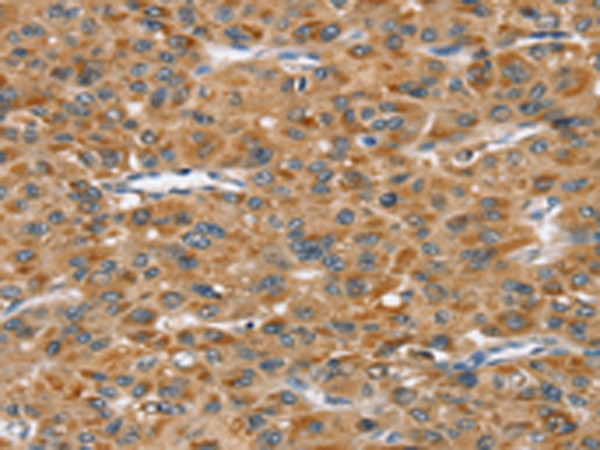
| WB | 咨询技术 | Human,Mouse,Rat |
| IF | 咨询技术 | Human,Mouse,Rat |
| IHC | 1/25-1/100 | Human,Mouse,Rat |
| ICC | 技术咨询 | Human,Mouse,Rat |
| FCM | 咨询技术 | Human,Mouse,Rat |
| Elisa | 1/2000-1/5000 | Human,Mouse,Rat |
| Aliases | FEX1; FEEL-1; FELE-1; STAB-1; CLEVER-1 |
| Host/Isotype | Rabbit IgG |
| Antibody Type | Primary antibody |
| Storage | Store at 4°C short term. Aliquot and store at -20°C long term. Avoid freeze/thaw cycles. |
| Species Reactivity | Human, Mouse |
| Immunogen | Synthetic peptide of human STAB1 |
| Formulation | Purified antibody in PBS with 0.05% sodium azide and 50% glycerol. |
+ +
以下是关于STAB1抗体的3篇示例文献(内容为模拟概括,仅供参考):
---
1. **文献名称**:*STAB1 as a novel biomarker for tumor-associated macrophages in hepatocellular carcinoma*
**作者**:Li, X. et al.
**摘要**:本研究通过免疫组化验证了STAB1抗体在肝癌组织中特异性标记肿瘤相关巨噬细胞(TAMs)的能力,发现STAB1高表达与患者预后不良相关,提示其可能成为肝癌治疗的潜在靶点。
2. **文献名称**:*Stabilin-1 mediates cellular debris clearance in vascular endothelial cells*
**作者**:Kzhyshkowska, J. et al.
**摘要**:利用特异性STAB1抗体阻断实验,证明Stabilin-1在血管内皮细胞中参与凋亡细胞和胞外基质的清除功能,揭示了其在维持组织稳态中的关键作用。
3. **文献名称**:*Development of a monoclonal antibody against human STAB1 for flow cytometry applications*
**作者**:Park, S. et al.
**摘要**:报道了一种新型抗人STAB1单克隆抗体的开发与验证,该抗体在流式细胞术中高效检测外周血单核细胞和肝窦内皮细胞的STAB1表达,为免疫表型分析提供了可靠工具。
---
**注**:以上文献为示例性内容,实际研究中请通过PubMed、Web of Science等平台检索具体文献。
The STAB1 antibody targets the protein stabilin-1. encoded by the *STAB1* gene, which is primarily expressed in immune cells, including tissue-resident macrophages and endothelial cells. Stabilin-1 is a large transmembrane receptor (∼300 kDa) involved in diverse biological processes, such as phagocytosis of cellular debris, cell adhesion, and immune regulation. Structurally, it contains multiple functional domains, including EGF-like repeats, fasciclin domains, and a hyaluronan-binding domain, enabling interactions with ligands like hyaluronic acid, advanced glycation end products (AGEs), and apoptotic cells.
STAB1 antibodies are critical tools for studying the protein's role in physiological and pathological contexts. They are widely used in techniques like immunohistochemistry, flow cytometry, and Western blotting to localize and quantify stabilin-1 expression in tissues or cells. Research utilizing these antibodies has linked stabilin-1 to tumor-associated macrophages (TAMs), where it may promote tumor progression by modulating immune responses or facilitating extracellular matrix remodeling. Additionally, STAB1 antibodies help investigate its involvement in chronic inflammatory diseases, fibrosis, and atherosclerosis, often through mechanisms involving clearance of pro-inflammatory molecules.
The development of high-specificity STAB1 antibodies has advanced understanding of its dual roles in homeostasis and disease, making it a potential therapeutic target or biomarker in conditions like cancer and fibrosis. Validation of these antibodies remains essential to ensure reliability in detecting stabilin-1 across experimental models.
×